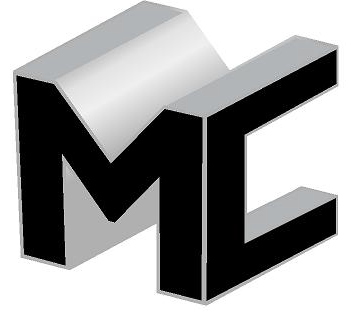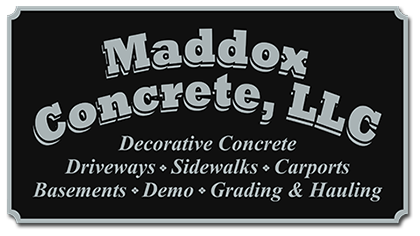

Concrete is a durable and versatile building material used in various construction projects, from sidewalks and driveways to foundations and buildings. Proper maintenance is crucial to ensure the longevity and structural integrity of concrete surfaces. This comprehensive guide explores the concrete curing process, effective methods for preventing concrete cracks, and essential tips for weatherproofing concrete.
Understanding the Concrete Curing Process
The curing process is critical to the strength and durability of concrete. It refers to the chemical reaction that occurs when water is added to the cement, resulting in hydration and hardening. Proper curing enhances concrete’s strength and reduces the likelihood of cracks and other defects.
Key Steps in Concrete Curing
- Moisture Retention: Keep the concrete surface moist by covering it with plastic sheeting or using a curing compound to prevent rapid evaporation.
- Time Duration: Allow sufficient time for the concrete to cure completely, typically 7 to 28 days depending on factors such as weather conditions and the type of cement used.
- Temperature Control: Maintain moderate temperatures during curing to promote optimal hydration and strength development.
Preventing Concrete Cracks
Concrete cracks can compromise the structural integrity and aesthetic appeal of surfaces. Implementing preventive measures can help minimize the occurrence of cracks and prolong the lifespan of concrete structures.
Proper Mix Design and Placement
- Quality Materials: Use high-quality cement, aggregates, and admixtures to ensure a strong and durable concrete mix.
- Proper Placement: Ensure adequate consolidation and proper placement techniques to minimize voids and weak spots that can lead to cracking.
Control Joint Placement
- Purpose of Control Joints: Install control joints or expansion joints in concrete slabs to control cracking caused by shrinkage and thermal expansion.
- Spacing and Depth: Follow recommended guidelines for spacing control joints based on the thickness and dimensions of the concrete slab.
Reinforcement Techniques
- Steel Reinforcement: Use reinforcing bars (rebar) or fibers in concrete to enhance its tensile strength and reduce the likelihood of cracking.
- Mesh or Wire: Incorporate wire mesh or fiber mesh to reinforce concrete surfaces, particularly in areas prone to cracking.
Weatherproofing Concrete
Weather exposure can affect the durability and appearance of concrete surfaces over time. Proper weatherproofing measures help protect concrete against moisture infiltration, freeze-thaw cycles, and other environmental factors.
Sealants and Coatings
- Sealant Application: Apply a quality concrete sealant or penetrating sealer to create a protective barrier against water, oil, and chemicals.
- Types of Sealants: Choose a sealant that is compatible with the specific requirements of your concrete surface, such as decorative finishes or high-traffic areas.
Drainage and Slope
- Proper Drainage: Ensure adequate drainage away from concrete surfaces to prevent water accumulation and potential damage.
- Slope Adjustment: Adjust the slope of surrounding landscapes or pavement to direct water away from concrete structures.
Regular Cleaning and Maintenance
- Cleaning Routine: Regularly clean concrete surfaces to remove dirt, debris, and stains that can degrade the appearance and integrity of the concrete.
- Maintenance Inspections: Conduct periodic inspections to identify early signs of wear, cracking, or damage that may require repair or remediation.
Tips for Long-Term Concrete Maintenance
Maintaining concrete surfaces requires ongoing care and attention to ensure their longevity and performance. Consider the following tips for effective long-term maintenance:
Routine Inspections
- Visual Checks: Perform visual inspections of concrete surfaces to detect cracks, spalling, or discoloration early.
- Structural Integrity: Assess the structural integrity of concrete elements, such as foundations and retaining walls, to identify potential issues.
Prompt Repairs
- Crack Repair: Address cracks promptly by filling them with appropriate sealants or patching compounds to prevent moisture penetration and further deterioration.
- Surface Treatment: Apply surface treatments or overlays as needed to restore the appearance and functionality of concrete surfaces.
Professional Maintenance Services
- Expert Advice: Consult with professional concrete contractors or maintenance specialists for tailored recommendations and services.
- Scheduled Maintenance: Schedule regular maintenance visits to inspect, clean, and repair concrete surfaces based on their specific usage and environmental exposure.
Conclusion
Proper concrete maintenance is essential for preserving the strength, durability, and aesthetic appeal of concrete surfaces in various applications. By understanding the concrete curing process, implementing preventive measures to prevent cracks, and employing effective weatherproofing techniques, you can extend the lifespan of concrete structures and minimize the need for costly repairs. Incorporate best practices for concrete maintenance into your routine to ensure long-term performance and reliability of concrete surfaces in residential, commercial, and industrial settings.
Need Concrete Contractors in Sanford, NC?
We are the area’s best concrete company. We specialize in concrete finishing of all types of concrete for residential and commercial customers. Our services include pavement, driveways, footings, sidewalks, decorative concrete, hauling, demolition, and property grading. We’re fully insured. Contact us today for quality workmanship and service.

